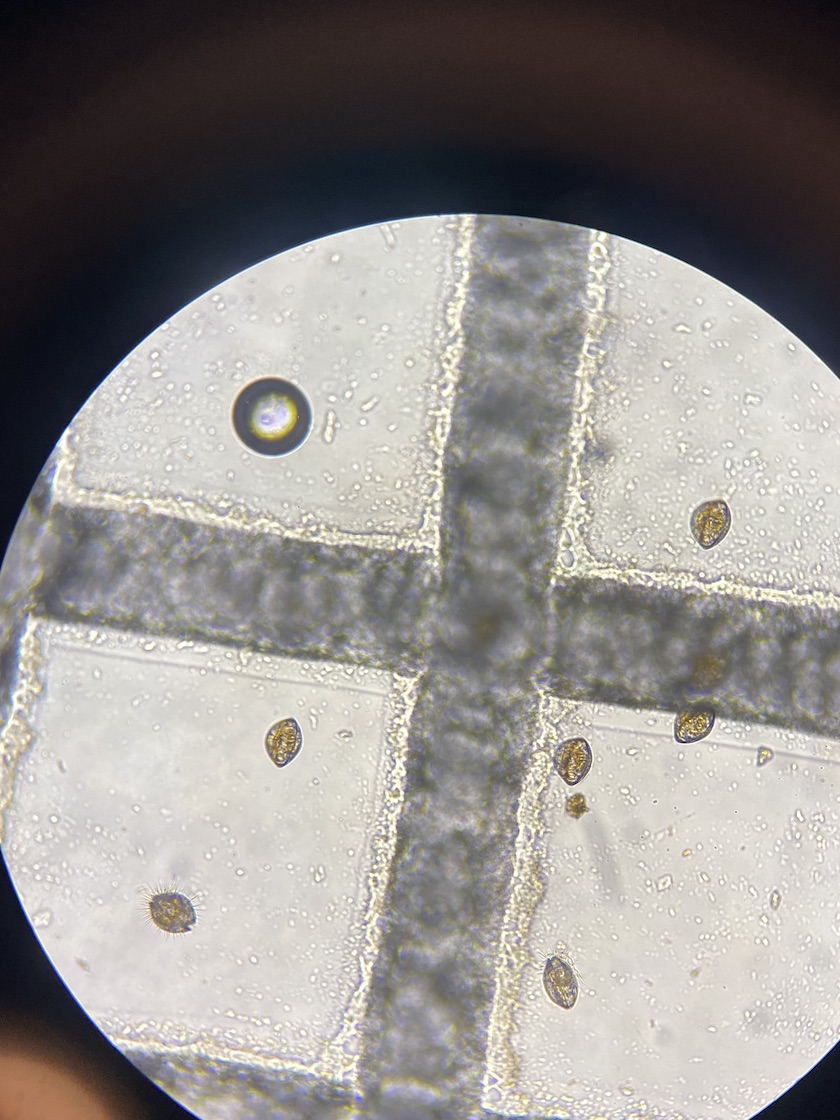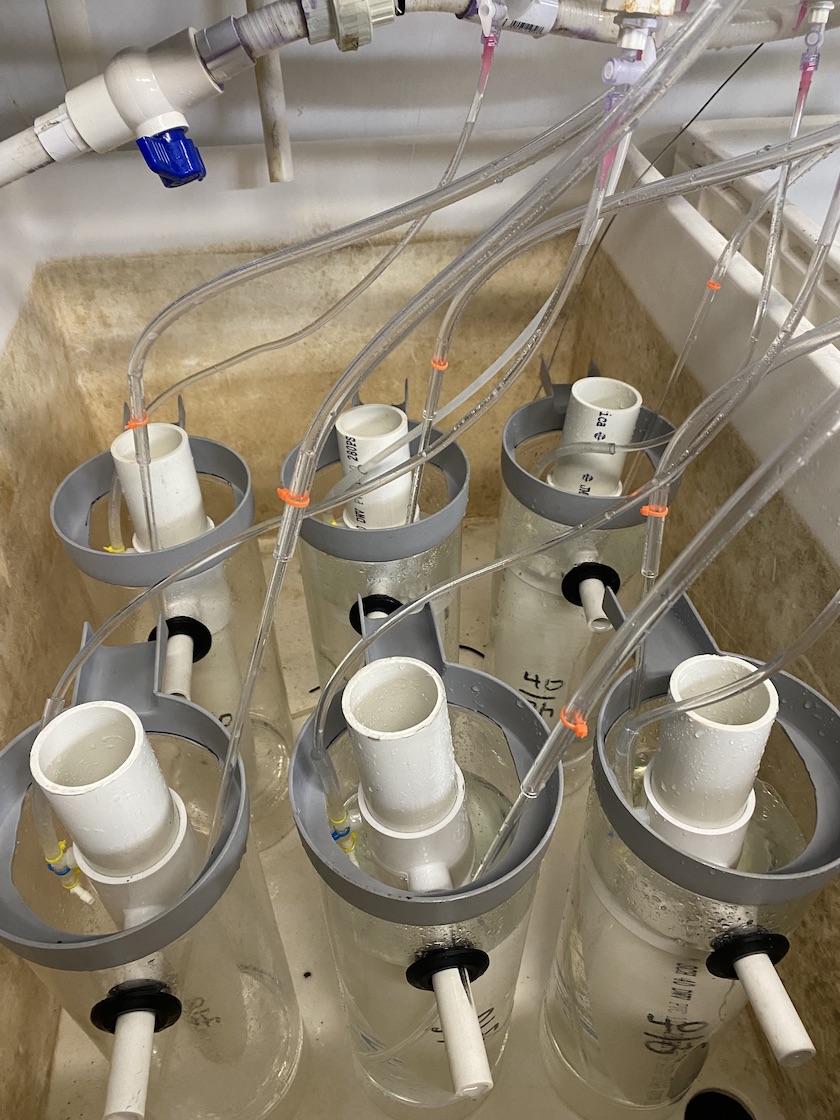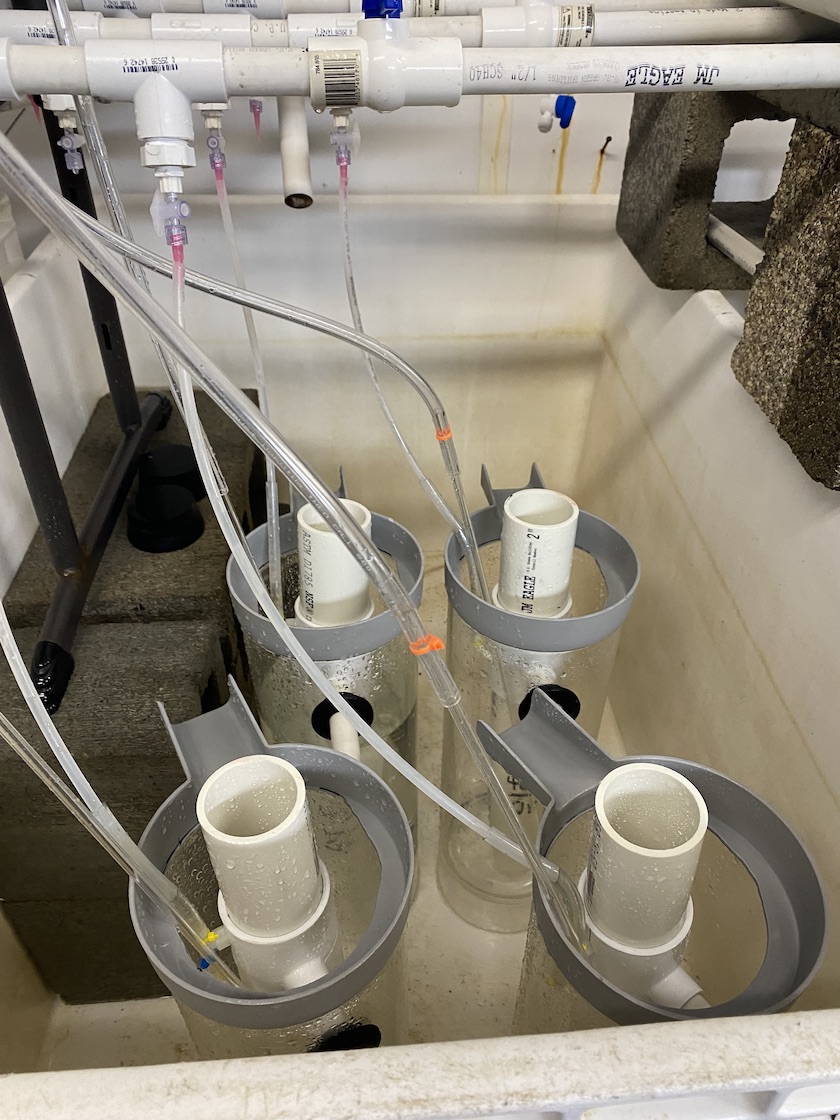Larval rearing at Point Whitney
Today, we moved larvae that were spawned and reared at Pt. Whitney hatchery (~48 hrs old) into HUDL systemsfor the Roberts Lab USDA oyster project.
The larvae were provided by Pt. Whitney for us to use. We first concentrated the larvae by pouring onto a 30µm seive and rinsing into a ~1L measuring jar. We estimated larval density and on a plankton counting slide. We have approx. 2.2-2.5 million larvae.
We cleaned the HUDL systems and then allocated larvae evenly across 10 HUDLs to have approx. 220,000-250,000 larvae in each.
Larvae under the scope:

HUDL systems:


HUDLs all had water flow and bubbles. Water flow was delivered from a header tank at 28°C.
We started the peristaltic pump to deliver algae to the larvae. It was set at 75 with 2 min on and 2 min off. We ran this for about an hour on the larval pool with approx. 12.5 million algal cells per mL. After one hour, fluorometer readings were between 16-20. We are aiming for about 15. We reduced the pump to 25 with 2 min on and 2 min off. After another hour or so the readings were between 12-16.
To calculate cell density from the hatchery stock, we used the following calculations:
- Load a sample from the algal stock onto the hemocytometer.
- Count the number of cells in 3-5 of the large squares until a count of 50-100 is reached.
- Use the worksheet on Google Drive here to calculate cell density and the amount of stock that should be used to load our algal bucket each day. After talking to staff, we are aiming for 5 x 10^10 cells total in the bucket each day.
The equation on the Google Sheet is as follows:
- Number of cells counted / number of squares
- Number of cells per square / 4 x 10^-6
- This gives the number of cells per mL
- 5 x 10^10 / cells per mL = mL volume of stock required


